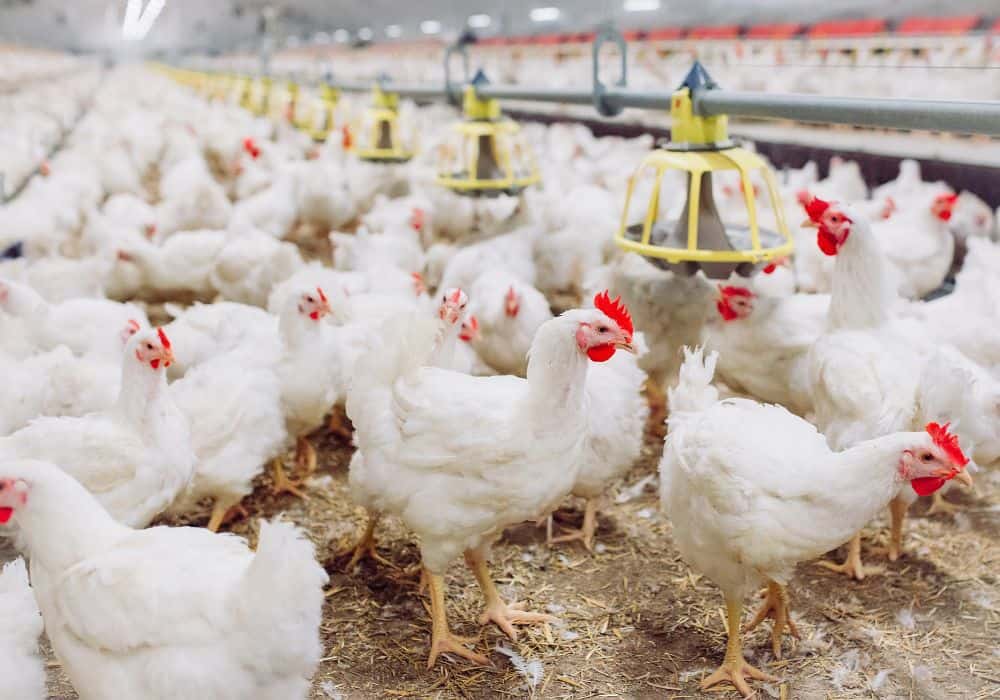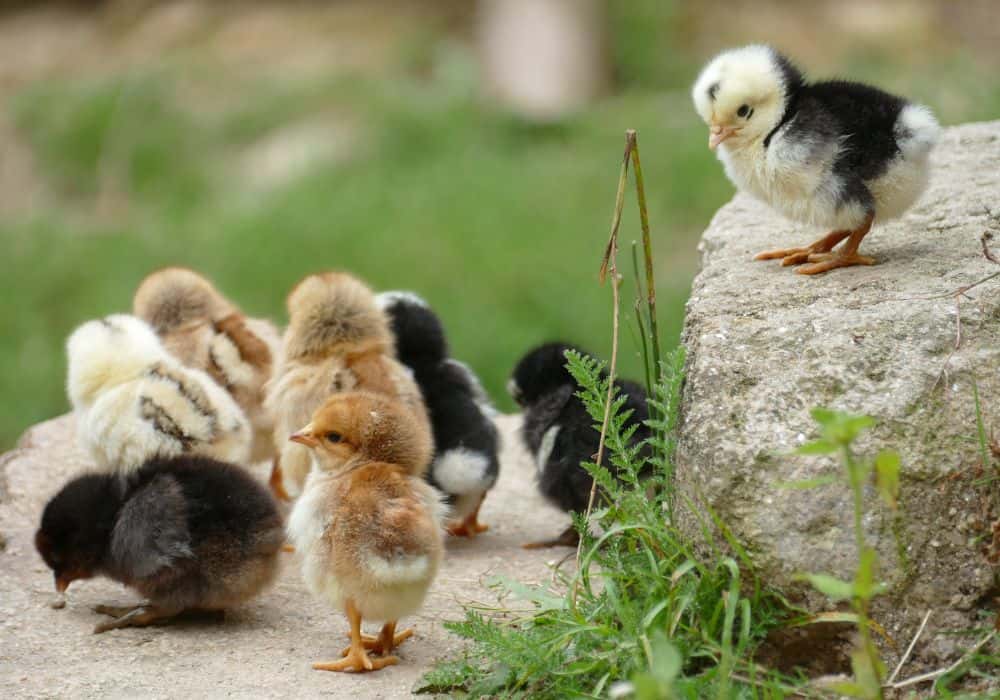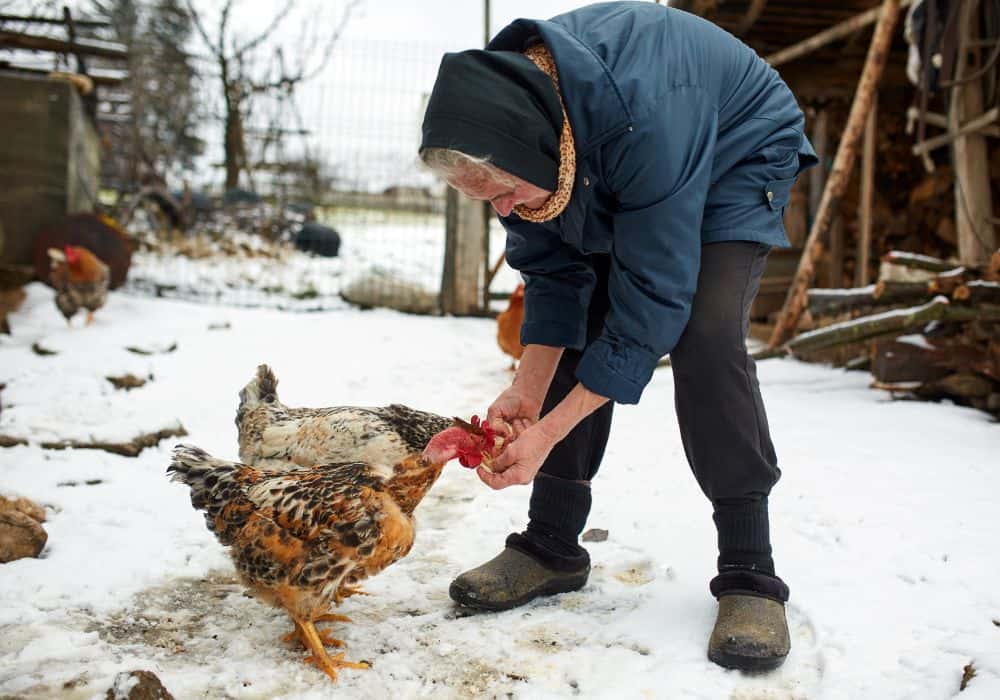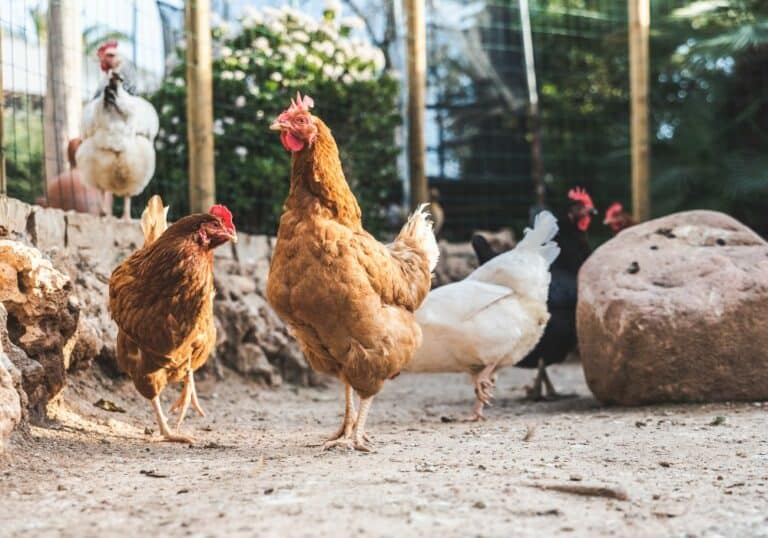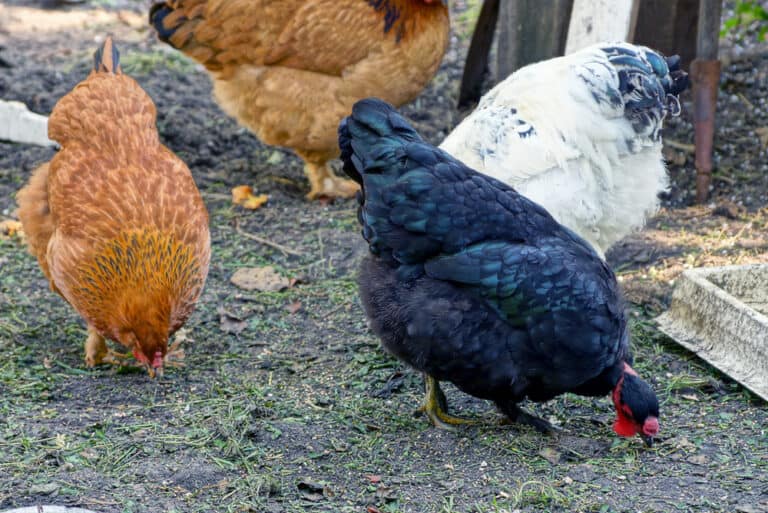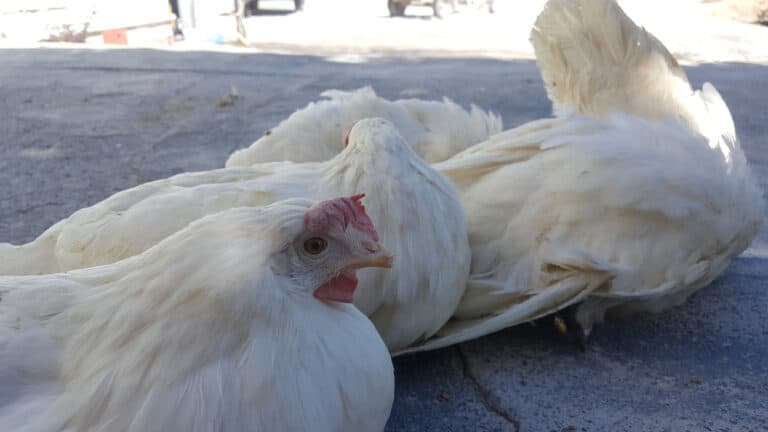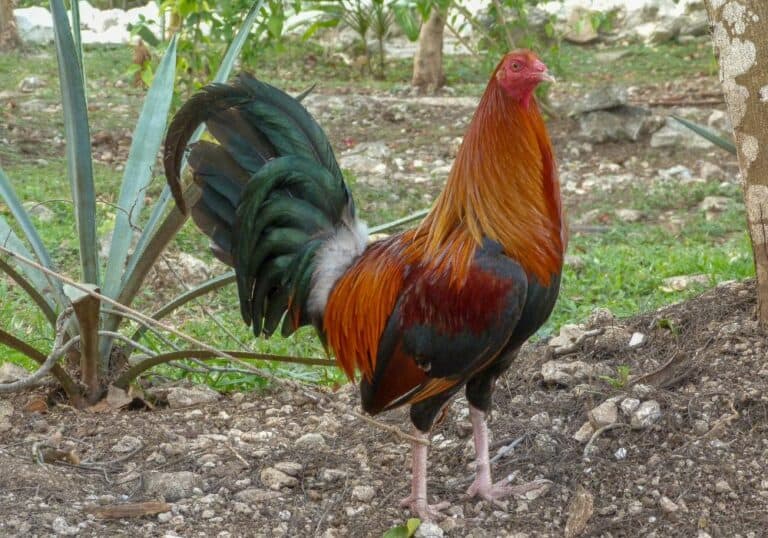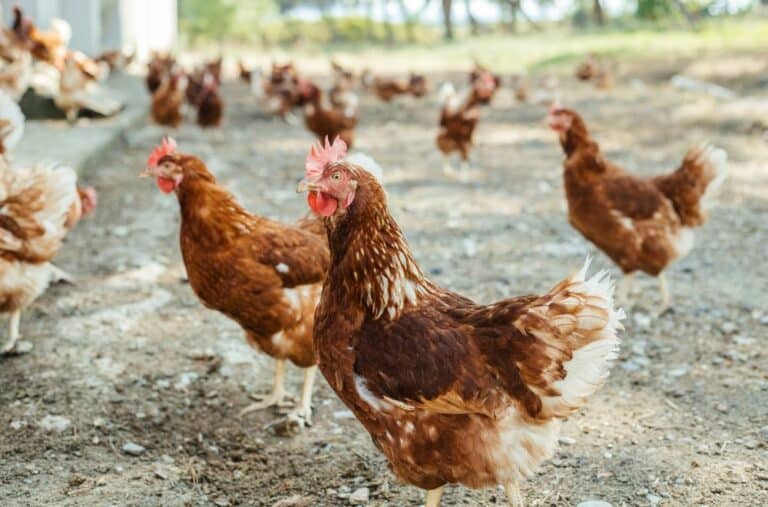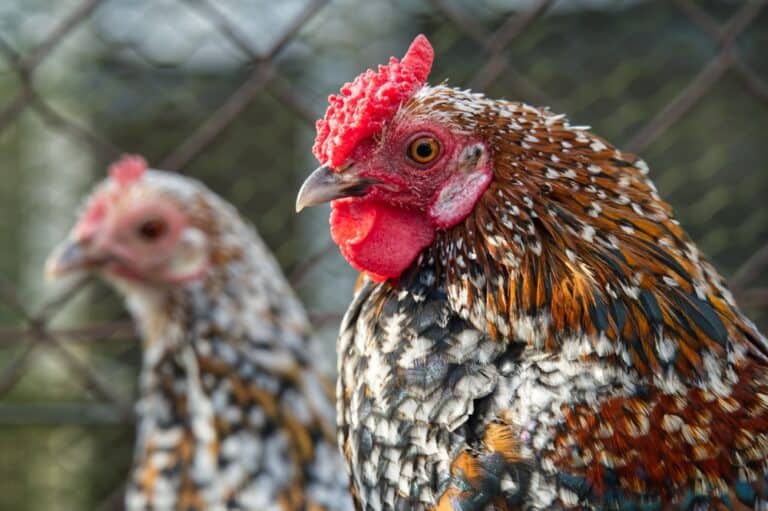Feeding an entire flock of chickens can be a complicated task. For starters, chickens are omnivores and can eat all sorts of things most people may not even suspect were acceptable for these birds. At the same time, however, there are a lot of foods you’d think are fine for chickens but can actually be very dangerous for their health.
Add the different dietary needs of egg-laying hens and meat chickens, as well as of roosters and young chicks, add the difference between the needs of chickens kept in a coop all day and those given the freedom of free-ranging, and the question becomes even more convoluted.
So, what to feed chickens? What are some of the No-Nos to avoid, what are the healthiest foods to look for, and what are some of the other important tips you should always keep in mind? Let’s go over all these points one by one below.
What to feed chickens?
Chickens are, surprisingly to many people, omnivores rather than herbivores. In other words, not only can they eat more diverse foods than just grains, seeds, and veggies, but they benefit greatly from having a more diverse diet.
In the wild, chickens eat a varied combination of the tips and seeds of plants such as buckwheat, bluegrass, clovers, dandelions, and other weeds, as well as whatever worms, slugs, and insects they can catch. Chickens are also known for consuming some grit such as sand, coarse dirt, and gravel from time to time – they keep that in their gizzards and then use it to help grind the other foods they forage.
In fact, it’s not all that uncommon for chickens to even eat small lizards and mice when they can catch them. Many chicken keepers who free-range their poultry have seen their roosters hunt mice down and feed them to their hens.
Does all this mean that you should feed your backyard chickens with live mice as you would a pet snake? Of course not. However, it does mean that you need to give your chickens more than just a pile of seeds every morning.
If you look at the contents of most commercial chicken feeds, you’d see that they include a wide range of ingredients that aim to provide your poultry birds with all the minerals, vitamins, calcium, protein, and other nutrients they need.
Even if you use such a supposedly “balanced” commercial feed, however, it’s still incredibly important that you diversify your flock’s diet with other foods and treats. This is one of the many reasons why free-ranging your chickens is so important – because it gives your birds the freedom to forage for whatever extra types of food they feel they need.
If you don’t have the ability to let your chickens free-range, however, even just giving them a decent chicken run – a fenced area out of the coop where they can go out to stretch their legs, run around, and dust bathe in – will still give them the ability to forage for insects a little bit. Still, with no free-ranging, you’d want to supplement your flock’s diet with about 5% to 10% treats. We’ll elaborate more on that below.
Another thing you might notice if you look at commercial chicken feeds is that there are different types of feeds for different types of chickens – for egg-laying hens, for meat chickens, for roosters, for your chicks, etc. There are even different foods for certain chicken breeds that have special dietary needs! So, let’s go over some more specific examples next.
What should “meat chickens” eat?
Chickens that are being raised for their meat should be on a diet with extra high protein content. This is important as it allows these birds to reach their top weight more efficiently. This way, the farmer “gets the most” out of every meat chicken and is also able to process each chicken sooner as the birds reach their optimal size earlier in life.
This can feel a bit grim to talk about for some people, but that’s the reality of the poultry meat industry. After all, we’re not talking about factory farming here nor are we recommending growth-promoting antibiotics – we’re exclusively talking about a protein-rich diet for chickens that are meant to be processed for meat.
What’s more, we’d especially recommend allowing your meat chickens the freedom to spend as much time outdoors as possible rather than just staying medicated in the coop. Meat chickens that have been allowed to spend their – admittedly short – lives outdoors will typically grow larger and healthier than their indoor-raised counterparts.
This isn’t just some holistic stuff about “happy life = healthy life” either – free-ranging meat chickens are able to forage for insects, worms, mice, and other protein sources which further helps them grow larger. What’s more, the extra exercise chickens get this way makes their meat more delicious.
What should you feed egg-laying chickens?
An egg-laying chicken’s diet should be more focused on calcium intake rather than on proteins. The calcium is key here because you want your hens’ eggs to be as large and healthy as possible. Additionally, the presence of extra calcium in the diet is crucial for the hen’s health too.
The average healthy egg-laying hen will produce somewhere between 3 and 6 eggs a week or 150 and 300 eggs a year (depending on the breed too). Without enough calcium in its diet, such a hen will very quickly develop calcium deficiency too.
This can very quickly lead to Osteoporosis in your egg-laying hens which can drastically reduce their quality of life, egg-laying capabilities, and even lead to premature death. Fortunately, there are commercial feeds meant for egg-laying hens that are pretty rich in calcium. Plus, you can easily add more to your hens’ diet by grinding eggshells into the feed.
What to feed young chicks?
Young chicks do need their own specialized food, particularly as newly hatched chicks. The good news is that there are many great commercial options here – these are typically called “chick starters”. The other positive is that newly hatched chicks don’t need to eat anything the first 24 hours after hatching because they are still “full” from absorbing the yolk of the egg they’ve hatched from.
As you’d expect, however, there are lots of Dos and Don’ts in taking care of young chicks. For example, if you’re going to raise them yourself and not give/leave them to a hen, you’re going to have to teach them how to eat and drink. That’s because, while newly hatched chicks learn how to walk almost immediately, they have to be shown what and how to eat and how to drink without drowning.
This is typically done by spreading the chick starter all over the flooring and tapping on it with a finger in front of the chicks until they get the idea of pecking at it themselves – that’s basically what a mother hen does too to teach her kids.
The situation with drinking water is more complicated, however, as you’d need to set up a shallow water pan and carefully dip the tip of each chick’s beak in it a few times until it understands what’s happening.
These things do get easier if you have a hen to look after the chicks, however, but there is still a need for near-constant supervision even then. Young chicks don’t know what’s food and what isn’t so they quickly start pecking at anything they see, for example.
This means that you need to constantly keep their enclosure clean and change the flooring regularly to remove the droppings. It also means that there should be no non-edible stuff where you house the chicks.
The exact choice of chick starter also depends on whether you’ll be housing the chicks with or without a hen. that’s because some chick starters are medicated (they include a low-dose coccidiostat to prevent Coccidiosis) and others are not medicated (in case you’ve already vaccinated your chicks against the disease).
It’s crucial not to give a medicated chick starter to chicks that have already been vaccinated as the two don’t mix well. Plus, if you have a hen with the chicks, she shouldn’t eat medicated chick starter too, so, it’s wise to have the chicks vaccinated in that case.
Lastly, it’s strongly advised not to try feeding your chicks with homemade food or with treats as getting their nutritional needs wrong by even a tiny margin can be devastating for their developing organism. Instead, the best course of action is to stick to a pure chick starter for at least the full first month.
At most, you may want to add some vitamins and other supplements to it to make sure that your chicks don’t develop any deficiencies but most high-quality chick starters are balanced pretty well anyway.
What to feed roosters?
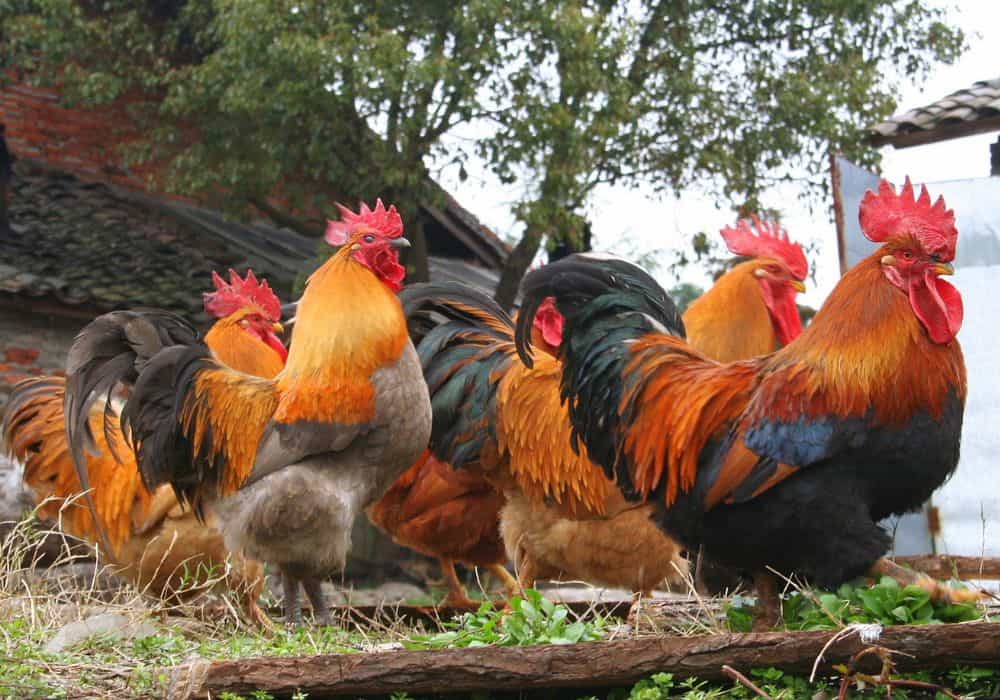
Something many chicken keepers do is that they set up a different feeder for their roosters and they feed them separately. Alternatively, you can just lift the rooster’s feeding pan a bit higher – this way the hens won’t be able to reach it. And, if the rooster happens to peck at the hens’ feed from time to time, that’s ok, there shouldn’t be any problems as long as he eats his own food most of the time.
Are there human foods chickens can eat?
We mentioned treats once or twice above and that’s because it’s usually not just ok to give your flock treats but it’s recommended. The rule of thumb here is that ~90% of your chickens’ diet should be from their poultry feed and the rest should be from foraging, scraps, and treats. The last category can easily include lots of different types of human food leftovers. Here are some examples:
Grains, most vegetable peels, silver beet, bok choy, bananas, a piece of apple, spinach, cabbage, ground oyster shells (these are a great source of calcium for egg-laying hens), insects found while foraging, cooked rice or pasta, carrots, turnip greens, leafy greens like lettuce and kale, as well as swiss chard, squash, beets, broccoli, pumpkins, carrots, and cucumbers.
You can also give your chickens (or allow them to forage) herbs such as oregano, lavender, cilantro, mint, parsley, basil, and thyme or perennial plants such as hostas, roses, daylilies, daisies, ferns, coneflowers, and others.
Many fruits are also perfectly fine for chickens, including a slice of watermelon, blueberries, and strawberries all make for very healthy chicken snacks. Just make sure that they don’t go above several percent of the chickens’ diet – ~90% should still be the standard poultry feed.
Which foods you should never-ever give your chickens?
While chickens can eat a lot of things, there are also some very big exceptions. The big list of foods to avoid includes: avocado (the pits and peels, in particular), garlic, onions, raw potatoes, rhubarb, and dried or uncooked beans. Adult chickens are usually smart enough to avoid foods that aren’t good for them but not always, so, it’s up to the chicken keeper to keep such foods away from them.
In conclusion
As omnivores, chickens can and should eat all sorts of different things. The easiest course of action for most chicken keepers is to just give their flock high-quality poultry feed and then let them forage for their own treats while free-ranging or in the chicken run. It’s often a good idea to give your birds something a little extra, however, as long as it’s safe and is well-suited for their dietary needs.

